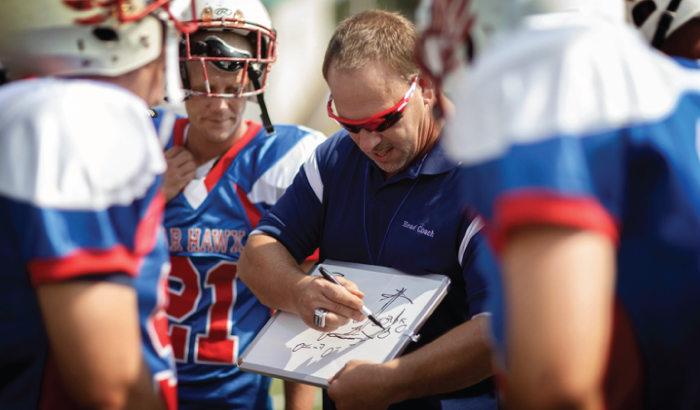When it comes to goals, Michael Jordan said it best when he said, “I’m a firm believer in goal setting. Step by step. I can’t see any other way of accomplishing anything.” As a coach, helping your athletes set real, tangible goals could fall by the wayside, especially when you only see them for a couple of hours a day. However, teaching your players how to set SMART goals can bolster their performance on the field, improve their achievements in the classroom, and prepare them to set goals in life. Here are the criteria for setting SMART goals for your team this season.

SPECIFIC
Have you ever heard someone say that they want to “play their position better this season” or that they will “try harder”. These are not specific goals. Think about what you are trying to accomplish and be precise with your goal.
For example, take this non-specific goal – “improve recovery time between practices” and try making it action-oriented by adding the “how-factor”. How can you improve your recovery time between practices? This could be solved by increasing the time spent stretching/rolling to 20 minutes after every practice. This kind of specific goal will set your athletes up for success.
MEASURABLE
Making your goals measurable is one way to define success. When an athlete wants to increase their squat by “a lot” this year, there is no real way to benchmark how close they are to reaching that target. Measuring your objectives is a great way to make goals more tangible.
One way to leverage these tangible goals is to use a strength record board to measure success against peers in the weight room. This is a very concrete measurement of your team’s weight lifting goals. Athletes can find validation in their progress towards their ultimate lifting goals.
ATTAINABLE
While hanging that championship banner at the end of the season may be the ultimate goal, it is important to emphasize the smaller, attainable goals along the way; one practice at a time. Many times, the “little” things like sleep, diet, recovery and cardio differentiates the team holding up the trophy at the end of the season from everyone else.
There is nothing wrong with having long-term season goals, but your bite-sized, attainable goals should lead up to your larger, overarching goals. Focusing on the little things and feasible goals will also keep your players motivated throughout the whole season.
RELEVANT
Making relevant goals ensures that your team cares about the grind. Motivation can quickly dissolve when an irrelevant goals distracts your players. An example of an irrelevant goal is your whole team running a 5k race under 18 minutes. While stressing cardio can be important, focusing on a 5k race time the whole season would distract from the task at hand.
If you are struggling to find relevant goals, start asking yourself questions like the following:
- Is the goal worthwhile to your team?
- Are my athletes the right people to reach this goal?
- Is the right time in the season to set this goal?
TIMELY
The last criteria for a SMART goal is making sure that your objective is timely and bound by time. Like we have mentioned before, there should be a good mix of long-term and short-term goals that work together and build off each other. Binding these goals with time requirements will create urgency and foster motivation among the players.
Utilizing the SMART goal method can be an effective way to provide clarity to your players’ goals. If you’re looking for some tools to start tracking your progress like a strength record board or a custom dry erase board, reach out to a Team Fitz team member today for your personalized quote.